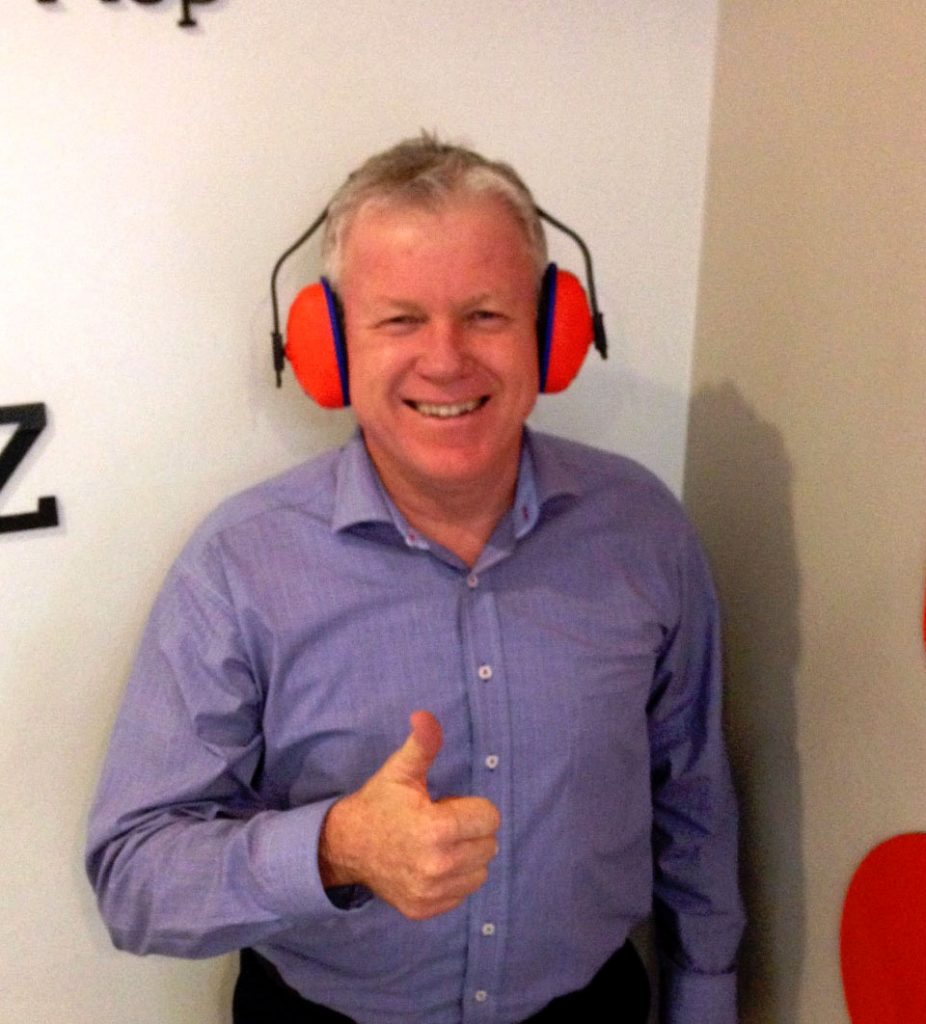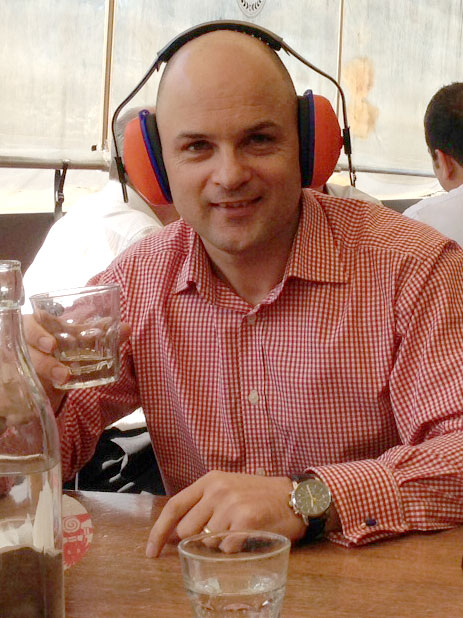
Hearing Awareness Week 2013 saw the first ever Silent Leadership Challenge in Australia with 72 participants across five States and Territories raising just under $30,000 to establish a hearing aid bank for working age hearing-impaired Australians.
On 28 August 2013, corporate, community and political leaders were invited to experience what hearing impairment was like by wearing hearing protectors over the course of a day and to undertake four different activities: hold a one on one meeting; hold a group meeting; attend a social event and interact with their family. The point was to simulate hearing impairment and experience some of the frustration and isolation that one in six hearing impaired Australians experience every day.
The CEO of the Hearing Care Industry Association (HCIA) Ms Donna Staunton, said: “Those of us who have good hearing take the ability to communicate, to speak, to listen to others, for granted. The Challenge showed me how exhausting it must be for hearing impaired people to participate in everyday life. Trying to concentrate, to participate in conversations, to hear anything – was very difficult – and stressful”.
Other participants noted the following;
- “There was a lack of background noise, everything seemed quiet:
- Their own voice sounded different and they didn’t know if they were speaking too loudly or too quietly;
- Group meetings were okay as long as only one person spoke at any one time;
- Socialising was very difficult because of the background noise in most venues;
- Watching TV was possible but the volume had to be turned up and it was difficult to hear every word”.
As Jason Gowie, one of HCIA Board Members noted; “By the end of the day I started to feel myself avoid eye contact so as to not engage in conversation as it became too hard and I had a splitting headache from concentrating so intently during the day”.
In addition to raising funds, HCIA is hoping that the Silent Leadership Challenge will help change attitudes towards hearing impairment in Australia. At the moment, one in six Australians suffers from some form of hearing loss. Given the ageing population, this is set to increase to one in four Australians by 2050.
The funds raised in the Challenge will be made available to financially disadvantaged Australians who need a hearing aid in order to work. Those applying for the funds will have to meet certain criteria.
Why the Silent Leadership Challenge
Because:
- The ability to communicate, to speak and listen to others is fundamental to participation in work, education, social activities and the community.
- A loss of hearing fundamentally changes the ability of a person to communicate and limits the way he or she interacts with society. This can lead to isolation and have profound social and economic consequences for both the individual and society.
- One in six Australians suffers from some form of hearing loss. Given our ageing population, this is set to increase to one in every four Australians by 2050.
- As a country, we provide excellent service and excellent care for hearing-impaired people, if you are either too young or too old to be in the workforce. However, this leaves many people who have a hearing impairment and who are of working age without funding or access to technologies that will enable them to communicate and stay in the workforce. We aim to do something about that and we want you to help.
We have developed criteria and are accepting applications.
Feedback from the Silent Leadership Challenge, 2013
John Pappalardo – My four communication challenges

Well the first thing I noticed was the lack of background noises or environmental sounds. I guess we all take these for granted but I must say that it was quite an eerie feeling to not hear them. You feel more alone!
In particular I noticed the changes in how I heard my own voice. It was deeper, sounded loud and there was a lot of echo. While I could still converse in a one-on-one meeting, I found that I was constantly asking people if I was talking too loud.
Next I tackled a meeting. I could still follow the discussion when only one other participant was talking. The problems arose when two people started to talk at once. I realised that I had been concentrating hard on the speaker, so when two spoke I didn’t know which way to turn. This problem got worse when someone to the side of me spoke. Frankly, I found it very difficult to absorb all that was being said! Then I went to a busy shopping centre for lunch and then popped into one of our clinics. Suffice to say it was rather pleasant not having the background noise but very hard to follow conversation. Later in the evening, I attempted watching television. Once again, I missed out on hearing much of what was being said. In fact, I found the sound through a speaker rather than a natural voice even more difficult to hear.
This challenge helped me understand even more how difficult it must be for those with a significant hearing impairment. I understand why they may “switch off” as they need to concentrate much more than those with normal hearing.
John Pappalardo
Chief Executive Officer – National Hearing Care Chairman – Hearing Care Industry Association
John Gimpel – Older, Engaged and Positive… We all want to enjoy our senior years

Hearing loss is a horrible affliction… witness this five step sequence from hearing loss to being deemed ‘old and cranky’:
Hearing loss generally isn’t going to kill you so it’s not an attention grabbing or high profile health issue. Most people over 60 don’t ask for, nor do many doctors suggest, a regular hearing check up like they would for blood pressure, cholesterol, prostate cancer, breast cancer, etc, etc.
- Hearing loss is insidious – it happens gradually and you effectively don’t know what you are not hearing.
- Hearing loss often heavily impacts loved ones and colleagues, who get irritated at repeating themselves and who can give up compensating for those with a loss.
- There remains in some people’s minds a silly stigma about wearing hearing aids, so often people don’t get help for their hearing loss – or they put it off for years
- The brain can lose its ability to recognise sounds after not hearing them for a while, so if rehabilitation is left too long, some of life’s sounds are lost forever.
How’s that sequence for a ready-made recipe for a person to become isolated as they age!
In my view, hearing loss needs to be a higher profile issue… that’s the key to stopping the above sequence. And thats the reason for the Silent Leadership Challenge – to raise awareness of hearing loss and its consequences!
John Gimpel
Managing Director, Connect Hearing
Jason Gowie – Comments on my Silent Leadership Challenge

On a personal level I found the challenge extremely difficult and certainly gained a greater appreciation of the world people suffering from hearing loss live in. I was surprised at how eerily quiet things were with no background noise. I also found the sound of my own voice a little different and was always worried I was talking too loud – when in fact others were indicating quite the opposite. By the end of the day I started to feel myself avoid eye contact so as to not engage in conversation as it became too hard and I had a splitting headache from concentrating so intently during the day. Just a small glimpse into the world of those living with hearing loss but what a valuable experience, and certainly one I will not forget in a hurry.
Jason Gowie
Managing Director, Oticon Australia, Australia and New Zealand